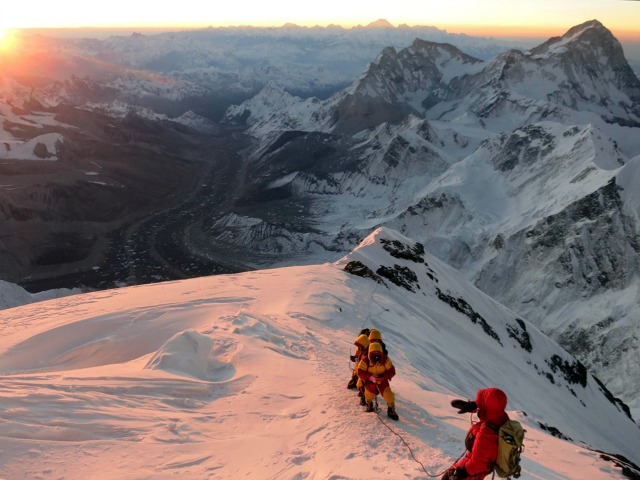
At least twelve people at the foot of Mount Everest were killed early this morning by an avalanche sweeping down the world’s tallest peak. The incident is the deadliest in known history, even as search crews seek to find four climbers still missing.
According to CNN, three individuals were “seriously injured” and three others injured more mildly in the avalanche in addition to the twelve bodies recovered. The avalanche struck around 6:45 A.M., when a group believed to be about 50 people were navigating the mountain. Most of the individuals on the mountain at the time were Nepali Sherpas setting up routes for climbers to scale later in the day. Sherpas, considered among the most experienced mountaineers in the world, set up ropes for climbers to use as they scale to the top of the mountain. The avalanche struck at more than 20,000 feet, according to Nepali Tourism Ministry mountaineering spokesman Tilak Ram Pandey.
The New York Times reports that the Nepalese government will be dispatching four helicopters to search the area for the missing. The area, known as “Popcorn Field” for snow that resembles the shapes of popcorn, is located at about 19,000 feet from sea level.
Since the operation to find the missing has not concluded, the identities of those who were killed or injured have not been disclosed, the BBC reports. The accident comes during peak tourism time for Nepal; April and May are often the most hospitable months to scale Mount Everest, and preparation of climbing routes by local sherpas is key to the safety of climbers. Climbers had begun to congregate at the foot of the mountain for the daily climb before the avalanche struck.
The increase in number of climbers has led to some changes in the way the Nepalese government controls access to the mountain. This March, Nepal announced the implementation of a new law that required those who scaled the mountain to return from its peak with seventeen pounds of litter. The growing popularity of scaling the mountain has resulted in an untenable amount of refuse littering the mountain, which could affect the weight and pressure placed on snow atop the mountain.
Mount Everest has seen both an increase in foot traffic and natural changes in the time that scaling the mountain became both increasingly possible and popular. Last year, a study found that Mount Everest had lost 13 percent of its ice coating in the past 50 years.

COMMENTS
Please let us know if you're having issues with commenting.